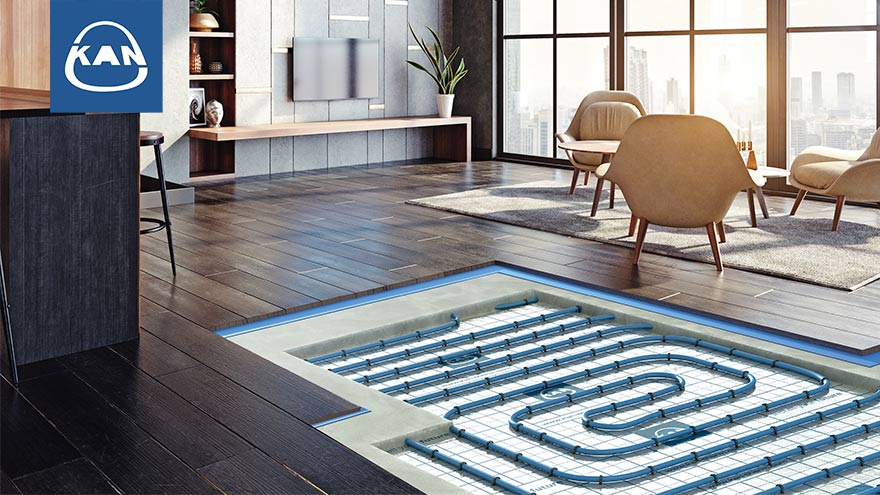Water underfloor heating, not so long ago a novelty on the construction market, is now increasingly used in single-family houses. The advantage is not only the energy efficiency of the system and the impact on the aesthetics of the interior, but also the comfort of use.

The heating season, starting in autumn and lasting until spring, is a cause for concern for people struggling with allergies. Unscrewed radiators, rarely ventilated rooms and dry indoor air contribute to the development of dust mites, which enter the respiratory tract with the circulating air. A solution that improves the quality of life for allergy sufferers is the installation of a water underfloor heating system.
Check the underfloor heating system from KAN-therm
KAN-therm surface heating makes it possible to create virtually any, even the most unusual, underfloor heating or cooling installation. A wide range of diameters (12-26 mm) and types of pipes enable their optimal use in all types of low-temperature surface heating. From wall heating, through underfloor heating systems, to heating open surfaces such as driveways or playing fields.
Heating by convection and radiation

What distinguishes water underfloor heating from traditional methods, and what people allergic to dust should pay special attention to, is the way the heat spreads. In the case of standard radiator heating (radiators, panel radiators) and convector heating (blowers, convectors, channel radiators), heat spreads through convection, i.e. rising. The phenomenon of convention is the free movement of air resulting from the temperature difference. The heated air begins to circulate in the room, and with it dust particles, mites, fungi and mold spores.
Unlike traditional methods, heat from underfloor heating spreads through radiation. The heat, penetrating the air, does not cause it to move intensively, so neither dust nor mites spread as intensively as in the case of standard heating.
Another advantage of this method of heat spread is that the air does not dry out excessively. The more humidity there is in a room, the less likely it is to develop respiratory diseases. When using KAN water underfloor heating, the relative humidity above the floor surface is maintained at 45%, which limits the development of mites.
The KAN offer includes solutions from the KAN-therm Tacker, KAN-therm Profil and KAN-therm Rail systems, designed for "wet" installation - adapted to standard concrete or anhydrite screeds. Unlike them, the KAN-therm TBS System is intended for dry construction, used in frame buildings.
